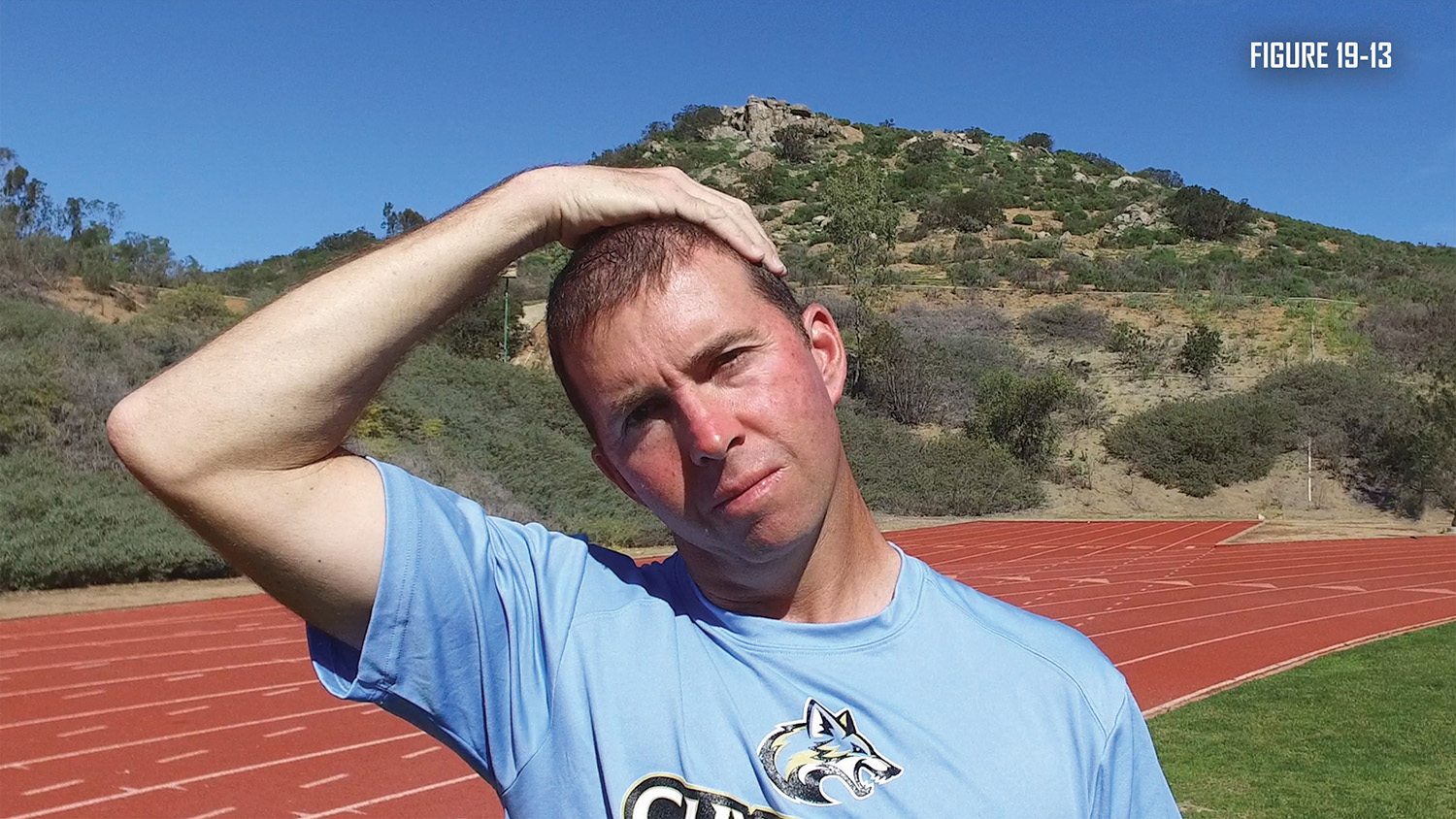
The most common problem with race walkers' shoulders is tightness resulting in high shoulder carriage. This also leads to a high arm carriage and due to your higher center of gravity could lead to a lifting call. In addition, tight shoulders could lead to cramps, making it difficult for you to maintain proper arm swing. Once your arms stop swinging, your hips are sure to follow. Once you lose your hips, you will be pedestrian walking the rest of the way.
Curt Clausen credits finally learning to relax his shoulders as the key to improving his arm swing and thus freeing up his hips. This technique improvement was a key factor in Clausen's bronze medal at the 1999 World Championships in Seville, Spain.
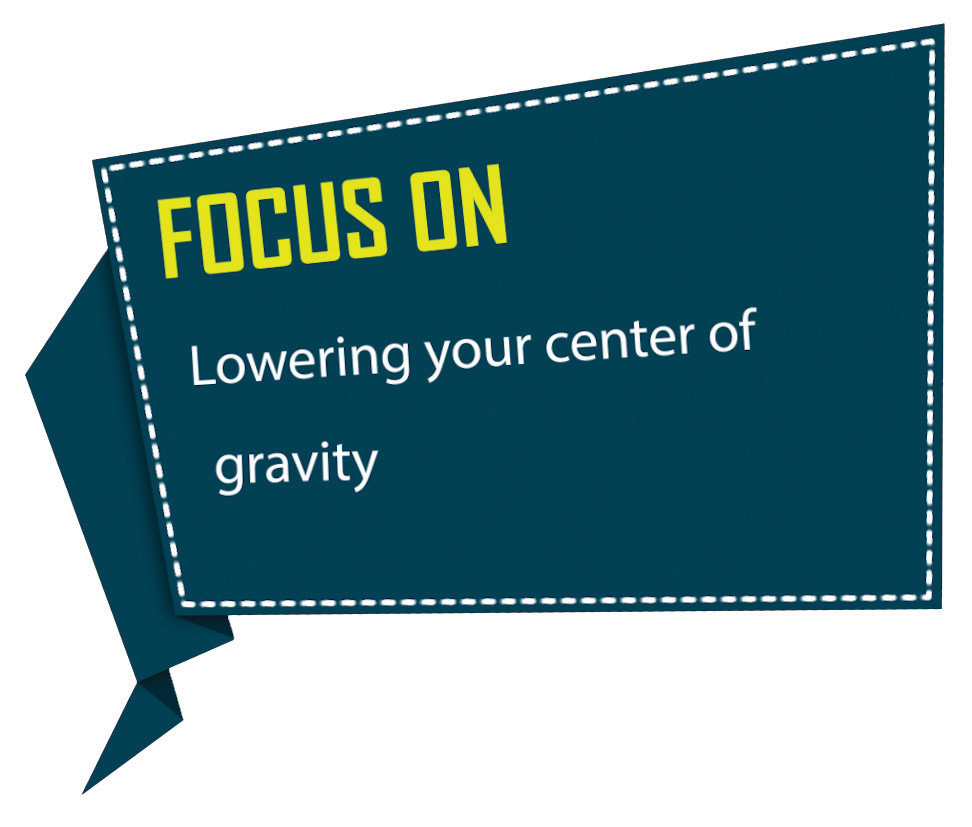
Focus on a low center of gravity. When your arm swings forward and back, focus on your elbows. Keeping your elbows down lowers your center of gravity and improves your arm swing.

The Reverse Windmill Stretch is a great way to warm up the shoulders and increase your range of motion at the same time.
Body Position
Slowly perform this exercise while standing with your feet approximately a shoulder width apart. Your right hand is on your right shoulder, arm relaxed, elbow toward the ground. Your left hand is on your left shoulder, but your left elbow is behind your body.
Steps
- Slowly raise the right elbow forward so that the arm becomes perpendicular to your body. Simultaneously, rotate the left arm backwards. Throughout the exercise as one arm rotates the other rotates similarly, but offset by 180-degrees. (Figure 19-1).
- Continue bringing the right arm straight up, keeping your right biceps as near to your face as possible. Likewise, continue to rotate the left arm downward (Figure 19-2).
- Slowly rotate the right arm back; It must travel outward at some point. The left arm rotates forward and starts rising (Figure 19-3).
- Gradually rotate the left arm through a complete circle (Figure 19-4) and return to the original position while the right arm rises.
- Repeat the rotation ten times with each arm.
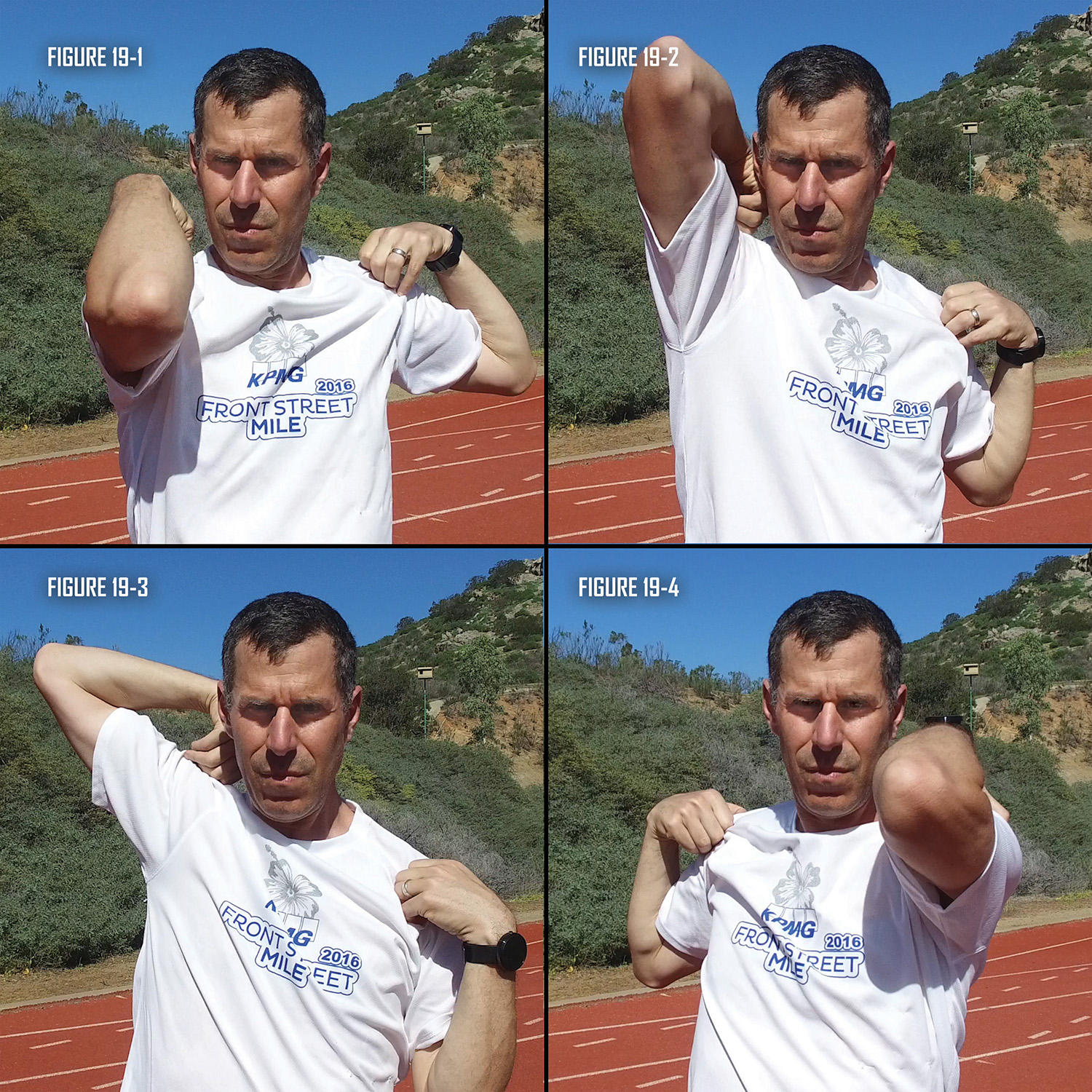

When the body is cold, the Backward Windmill drill is a great way to get blood pumping to all extremities quickly. In addition, it helps to relax and stretch the upper body (specifically targeting the shoulders), leading to a more fluid arm motion.
Body Position
Stand straight up with one arm at your side and the other pointed straight up to the sky.
Steps
- Swing the arm at your side up and forward at the same time as you swing the pointed arm back and down allowing both arms to make circles, keeping your arm close to the side of your head as you swing it back.
- Walk with the proper lower leg motion of race walking for 30 meters.
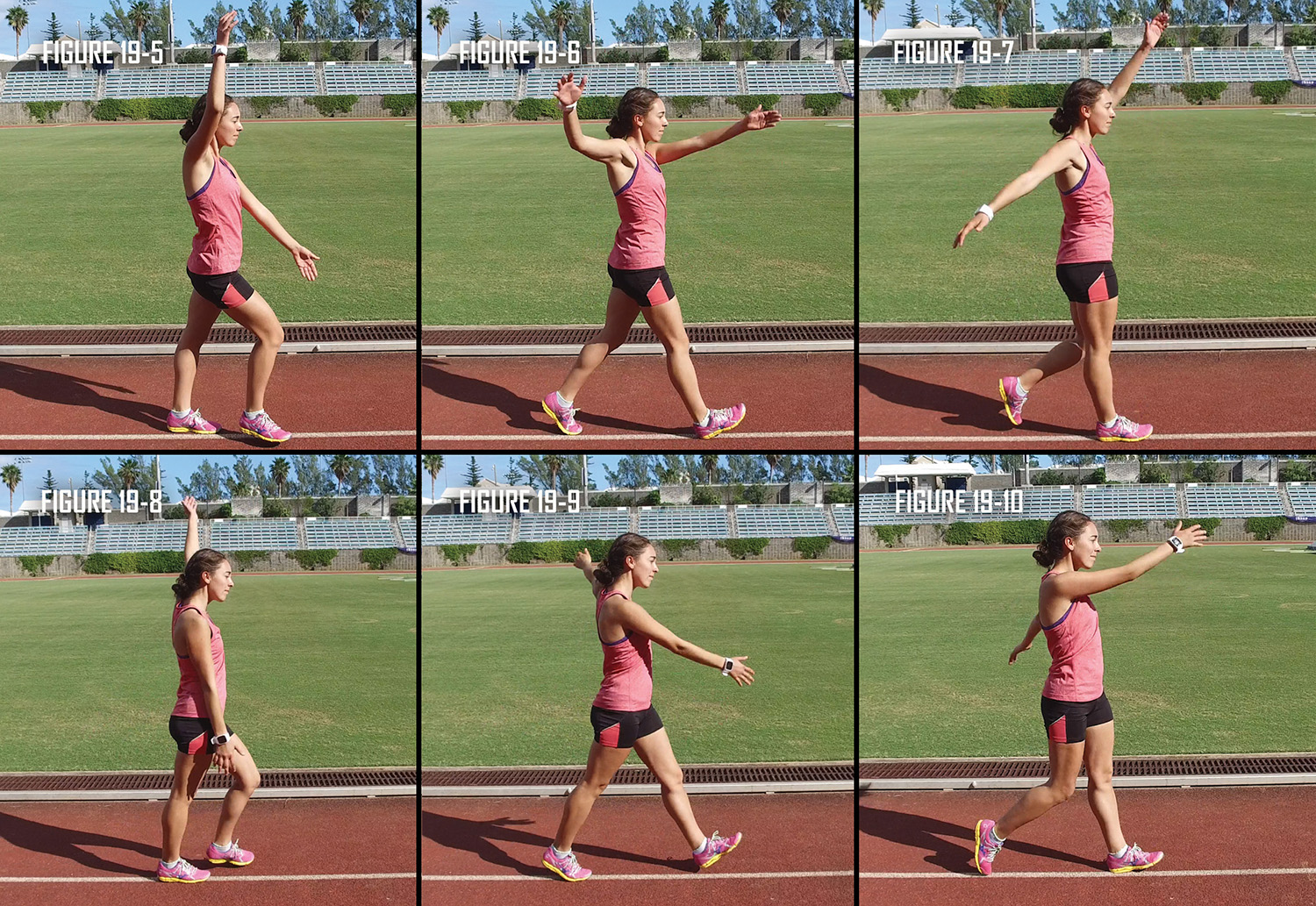

A good stretch to add to your cool down is the Static Shoulder stretch. It helps to relax the shoulders after a walk and increase range of motion.
Body Position
Perform this exercise while standing with your feet approximately a shoulder width apart.
Steps
- Attempt to clasp your hands behind your back, one from above and one from below (Figure 19-11); If you can reach, hold the position for 20 to 30 seconds.
- Reverse arms to stretch the other shoulder.
- If your hands remain a few inches apart from each other, use a towel or rope to complete the stretch (Figure 19-12).
- D) Walk your hands up the rope, positioning them as close together as possible, then reverse arms.
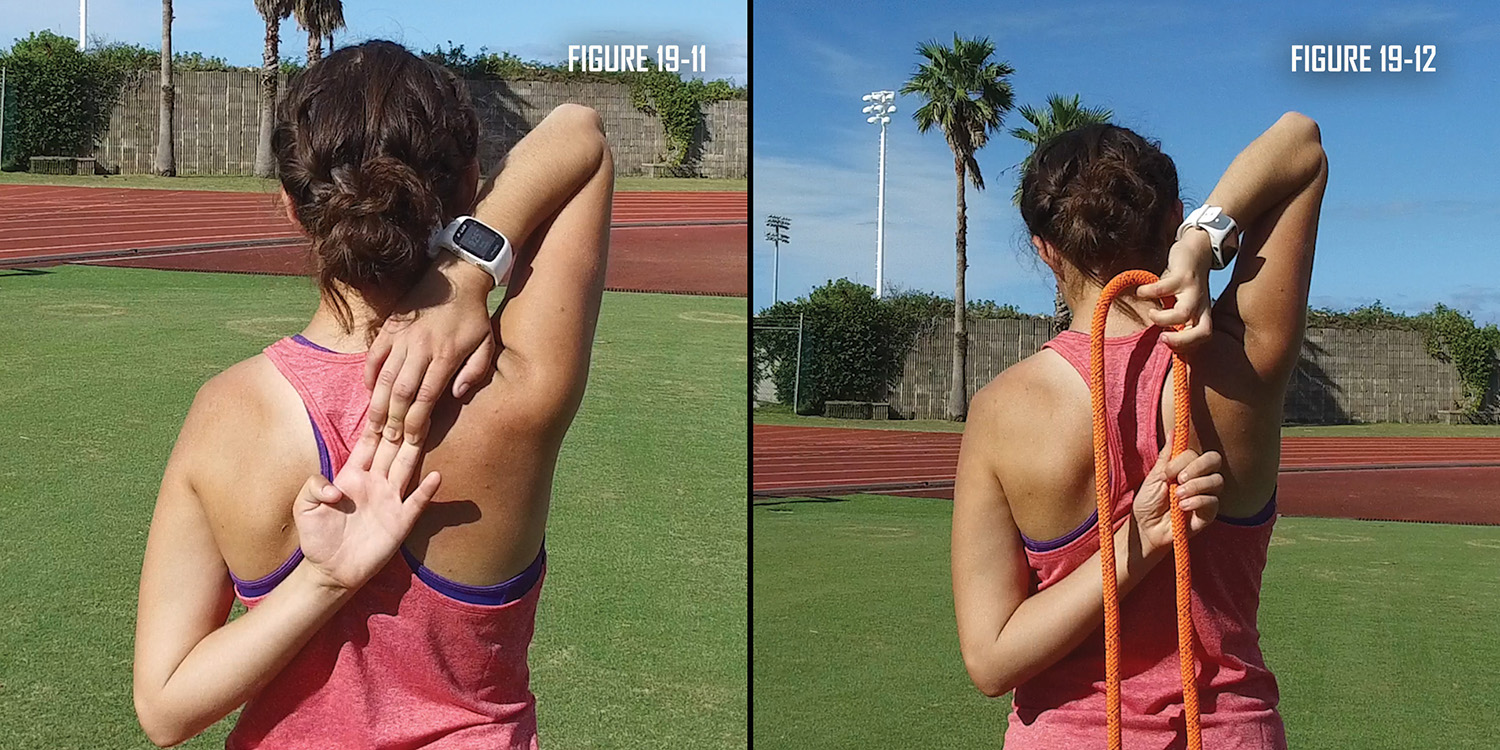

Tight neck muscles lead to high shoulders and a higher center of gravity, and thus loss of contact. If only one side is tight, your head could tilt to one side.
Body Position
This stretch can be accomplished from either a seated or standing position.
Steps
- Place your palm against the side of your head.
- Gently push your head to the side so that your ear moves closer to your shoulder (Figure 19-13).
- Repeat with the other hand in the opposite direction.
